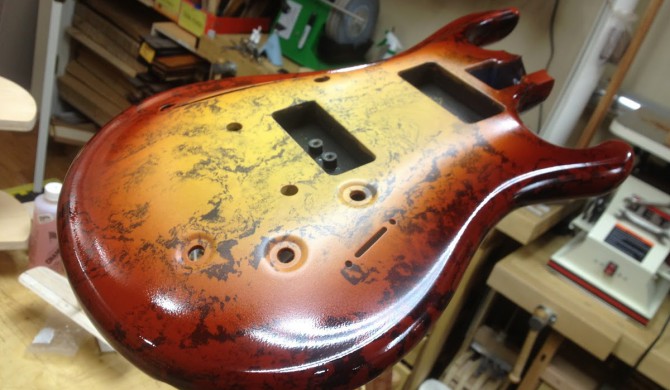
22
2013Made from Spruce fibers formed in a vacuum composite, the Flax is a rather unique hollowbody electric. A new process invented in Finland, Spruce is shredded along fiber length then mixed with a resin to form the body. A colleague of mine had a connection which led to our receiving two bodies and necks. This is the first guitar built in the USA from this process, to my knowledge. How did it work out? Well it sold quickly to the first customer that played the instrument.
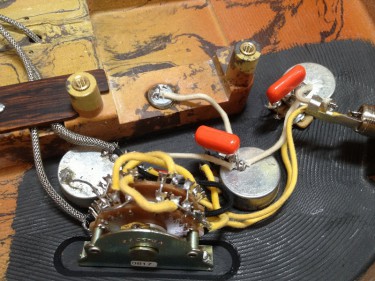
Vintage cloth connects CTS pots and a Superswitch. Orange Sprague capacitors.
I had Lindy Fralin wind the single coils. The wiring is super slick – a 5 way 4 wafer superswitch and some modifications to the single coil wiring allows for parallel, series and series out of phase configurations. The black finish is a special electrical insulating paint which I use at the controls and in the pickup cavity to reduce noise in the circuit.
The tone pots are no load which allows the player to take the tone pot (and capacitor) completely out of the circuit. Quite a bit of versatility with minimal controls.
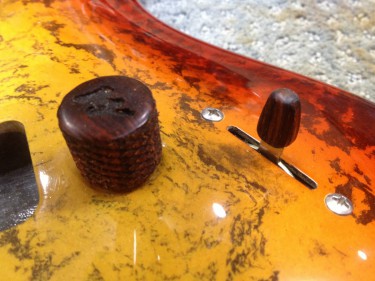
Knurled Cocobolo Rosewood Control knobs and switch tip.
Typically Morelli electrics have the M signature logo in the headstock. Given the flying eagle landing on the truss rod, I moved the logos to the control knobs. The knurled surface provides a very positive feel, and very unusual detail on electric guitars. This is more often found on the grips of high end pistol grips and rifle stocks.
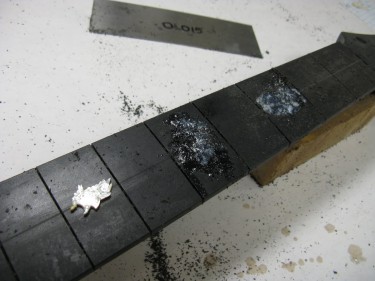
White MOP fly Eagle inlays.
The inlays are individually made feather and body sections, mostly in varying pieces of white Mother of Pearl. The birds are assembled on cardstock, then glued together, finally sanding off the cardstock. It is far easier to inlay one bird rather than its twenty constituent pieces.
Given the unusual black dyed Spruce composite neck (the fretboard is not black Ebony) a few tricks were necessary to get an effective fill during the inlay process. Dust was made from the fretboard material, along with cyanoacrylate. The fretboard was then black dyed again to ensure a uniform finish. As a final detail, the fretboard side markers were finished in a special glow-in-the-dark orange dots – quite visible in dim light onstage.
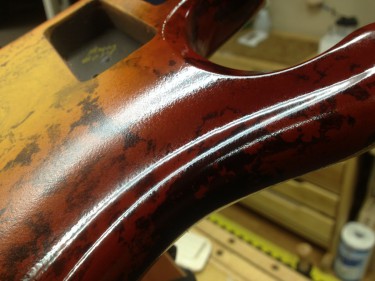
Tobacco Orange Burst in Nitrocellulose Lacquer. Translucent edge shows swirled Spruce.
The sunburst colors were progressively mixed from a single base to create a fluid transition from amber to tobacco orange. The edge was sprayed light enough to allow the black swirls to also show at the darkest parts of the tint. Unlike Flaxwood guitars finished in urethane, this guitar was shot in nitrocellulose lacquer.
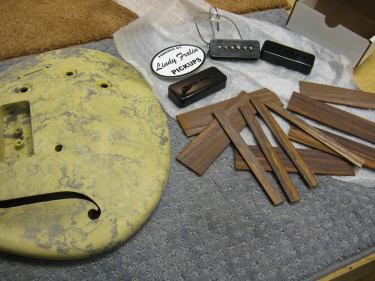
At the beginning of construction, body and Cocobolo Rosewood.
A full fret level and polish was performed to ensure we could dial down the action to where it played like butter. Careful attention was placed to round the fret ends and chamfer the fretboard, ensuring the best possible left hand comfort and playability.
Can we build one for you? Absolutely. To see more picture of the finished guitar, check it out in our Portfolio Page..
